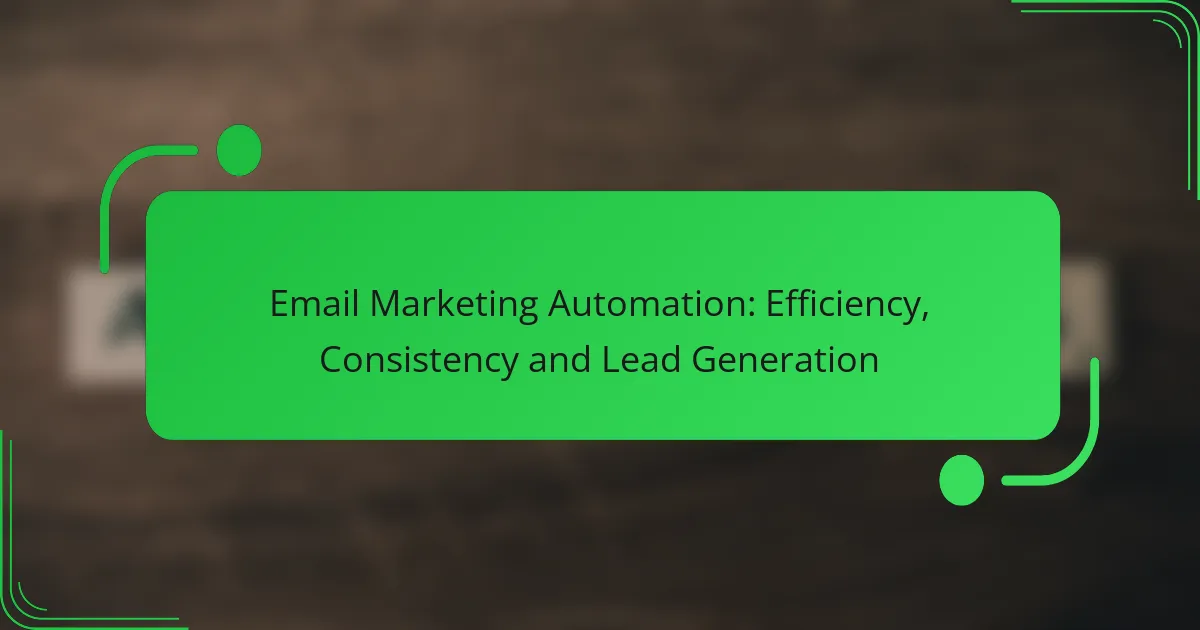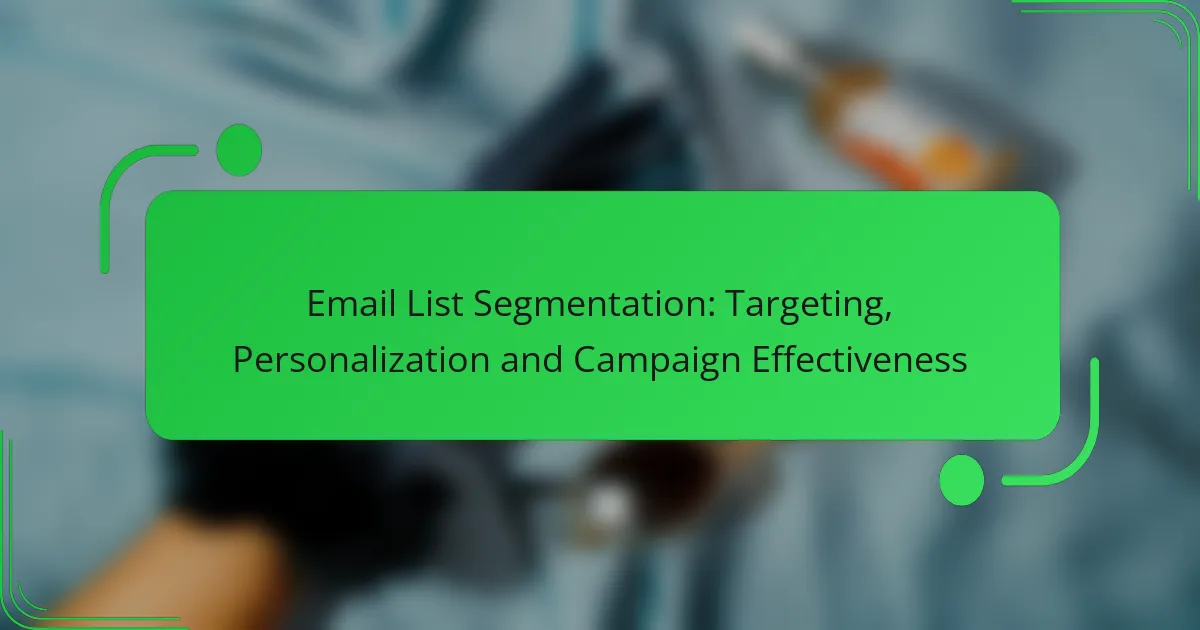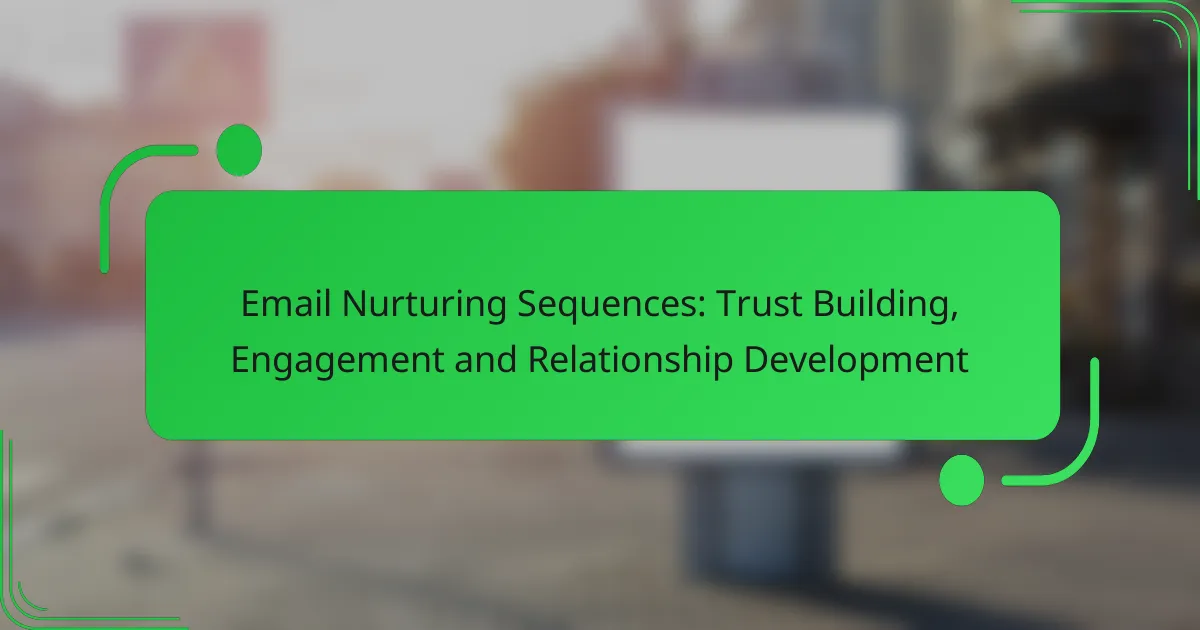Email marketing automation is a powerful tool that enhances lead generation by streamlining outreach processes and ensuring timely follow-ups. By delivering tailored content to potential customers, businesses can efficiently manage leads and maintain consistent communication, ultimately boosting conversion rates.
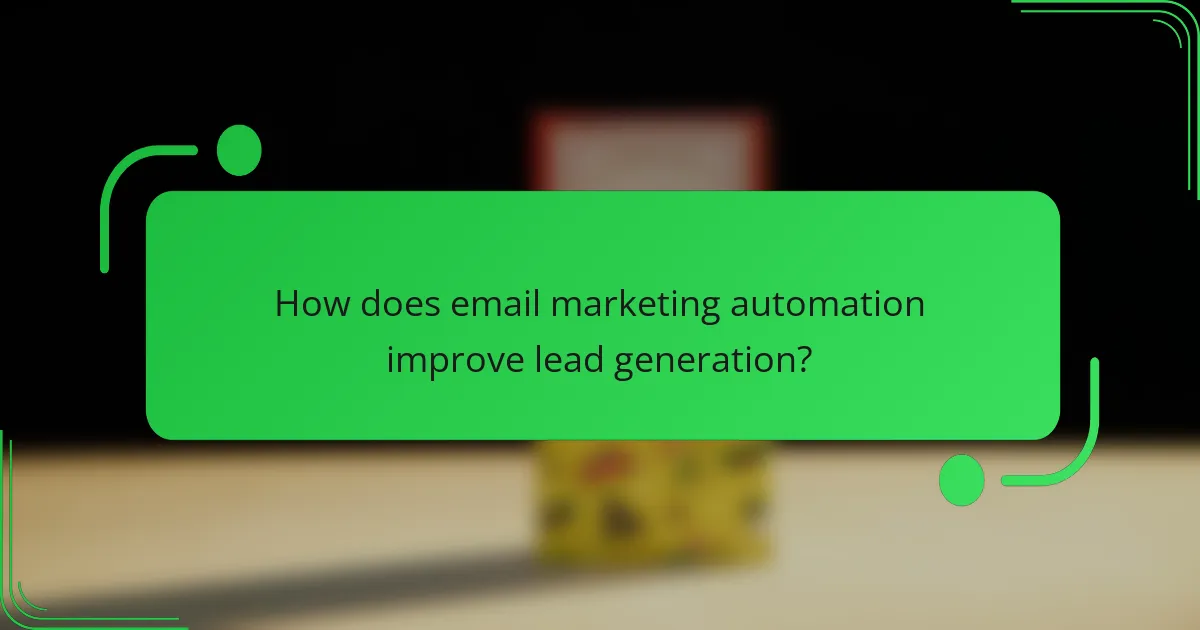
How does email marketing automation improve lead generation?
Email marketing automation enhances lead generation by streamlining outreach processes, ensuring timely follow-ups, and delivering tailored content to potential customers. This approach allows businesses to efficiently manage their leads and maintain consistent communication, ultimately increasing conversion rates.
Increased efficiency in outreach
Email marketing automation significantly boosts outreach efficiency by allowing businesses to send targeted messages to large segments of their audience simultaneously. Automated campaigns can be scheduled to run at optimal times, ensuring that emails reach recipients when they are most likely to engage.
For example, businesses can set up drip campaigns that automatically send a series of emails over days or weeks, nurturing leads without manual intervention. This not only saves time but also ensures that no lead is overlooked.
Consistent follow-up with leads
Automated email systems ensure that follow-ups are timely and consistent, which is crucial for maintaining engagement with leads. By scheduling follow-up emails based on user behavior, businesses can remind potential customers about their interest and encourage them to take action.
For instance, if a lead downloads a resource, an automated follow-up could be sent within a few days, offering additional related content or a special promotion. This consistent communication helps keep the brand top-of-mind for leads.
Personalized content delivery
Email marketing automation allows for personalized content delivery, which is essential for effective lead generation. By leveraging data such as user preferences and past interactions, businesses can tailor their messages to meet the specific needs and interests of each lead.
Using dynamic content features, emails can change based on the recipient’s profile, ensuring that each lead receives relevant information. This personalized approach increases the likelihood of engagement and conversion.
Enhanced tracking and analytics
Automation tools provide enhanced tracking and analytics capabilities, allowing businesses to monitor the performance of their email campaigns in real-time. Metrics such as open rates, click-through rates, and conversion rates can be easily analyzed to assess the effectiveness of different strategies.
By reviewing these analytics, businesses can make data-driven decisions to optimize future campaigns. For example, if certain subject lines yield higher open rates, they can be used more frequently in future outreach efforts.
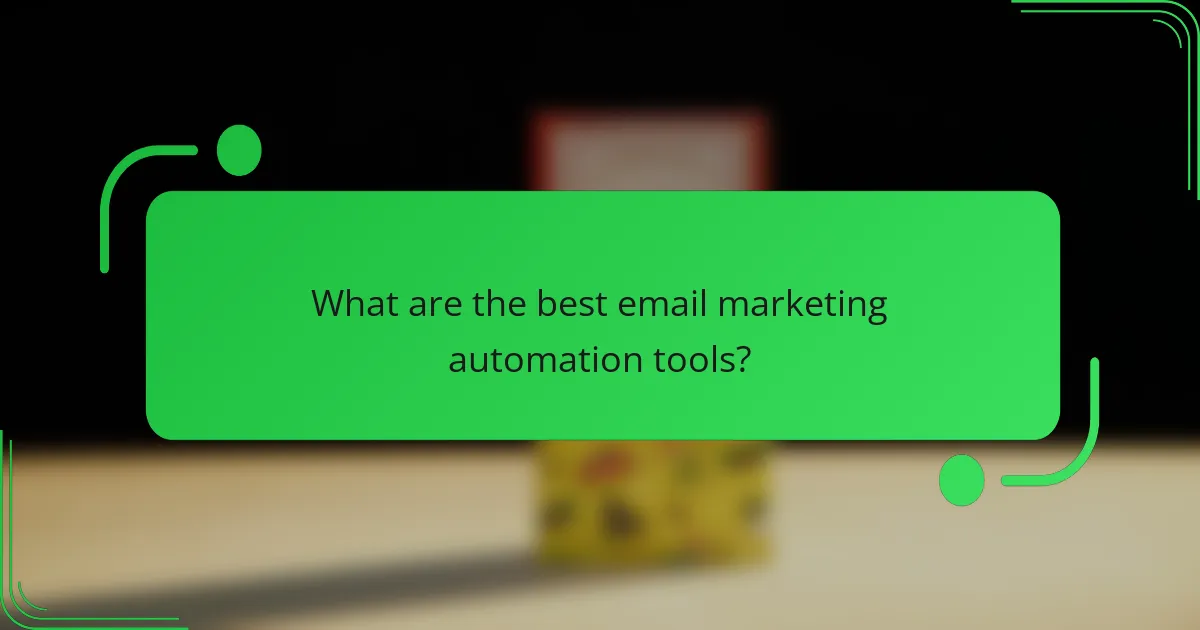
What are the best email marketing automation tools?
The best email marketing automation tools streamline campaigns, enhance engagement, and improve lead generation. Key options include HubSpot, Mailchimp, and ActiveCampaign, each offering unique features tailored to different marketing needs.
HubSpot for comprehensive marketing
HubSpot is a robust platform that integrates email marketing with a full suite of marketing tools. It offers features like CRM integration, analytics, and customizable templates, making it suitable for businesses looking for an all-in-one solution.
With HubSpot, users can automate workflows, segment audiences, and track performance metrics. This comprehensive approach allows marketers to create targeted campaigns that resonate with specific customer segments, ultimately driving conversions.
Mailchimp for user-friendly design
Mailchimp is known for its intuitive interface and ease of use, making it ideal for beginners. The platform provides a variety of templates and a drag-and-drop editor, allowing users to create visually appealing emails without extensive design skills.
Additionally, Mailchimp offers automation features that enable users to send personalized messages based on user behavior. This capability helps maintain engagement and can significantly improve open and click-through rates.
ActiveCampaign for advanced segmentation
ActiveCampaign excels in advanced segmentation and personalization, making it a powerful tool for marketers who want to tailor their messages. It allows users to create detailed customer profiles and segment lists based on various criteria, such as behavior and demographics.
This level of segmentation enables highly targeted campaigns, which can lead to better engagement and higher conversion rates. ActiveCampaign also includes automation features that help streamline the marketing process, ensuring timely and relevant communication with leads.
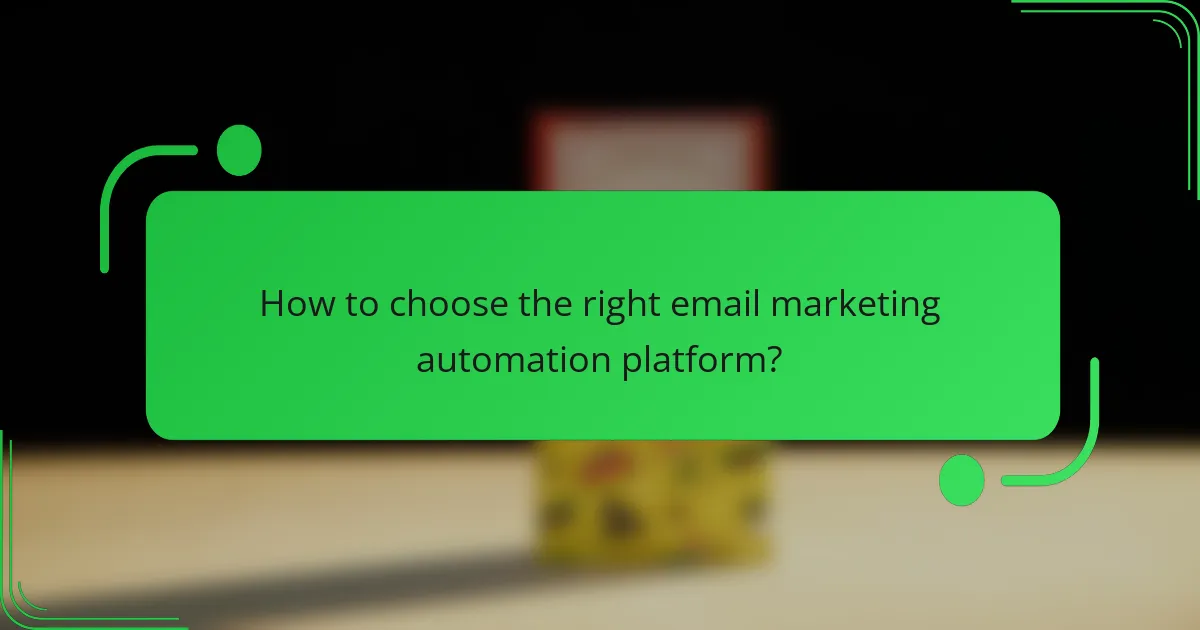
How to choose the right email marketing automation platform?
Selecting the right email marketing automation platform involves evaluating features, pricing, and support to ensure it meets your business needs. Focus on how well the platform can streamline your email campaigns, enhance lead generation, and maintain consistency in messaging.
Evaluate pricing models
When assessing pricing models, consider whether the platform charges based on the number of subscribers, emails sent, or features used. Many platforms offer tiered pricing, allowing you to choose a plan that aligns with your budget and marketing goals.
Look for platforms that provide transparent pricing without hidden fees. Some may offer free trials or freemium models, which can be beneficial for testing features before committing to a paid plan.
Assess integration capabilities
Integration capabilities are crucial for ensuring your email marketing platform works seamlessly with your existing tools, such as CRM systems, e-commerce platforms, and analytics software. Check if the platform supports popular integrations like Salesforce, Shopify, or Google Analytics.
Additionally, consider whether the platform offers APIs for custom integrations, which can enhance functionality and streamline workflows. A well-integrated system can significantly improve efficiency and data accuracy.
Consider user support options
User support is essential for resolving issues quickly and effectively. Evaluate the support options available, such as live chat, email, phone support, and comprehensive documentation. Some platforms may also offer dedicated account managers for personalized assistance.
Check user reviews to gauge the quality of support provided. Quick response times and knowledgeable staff can greatly enhance your experience, especially during critical campaign launches.
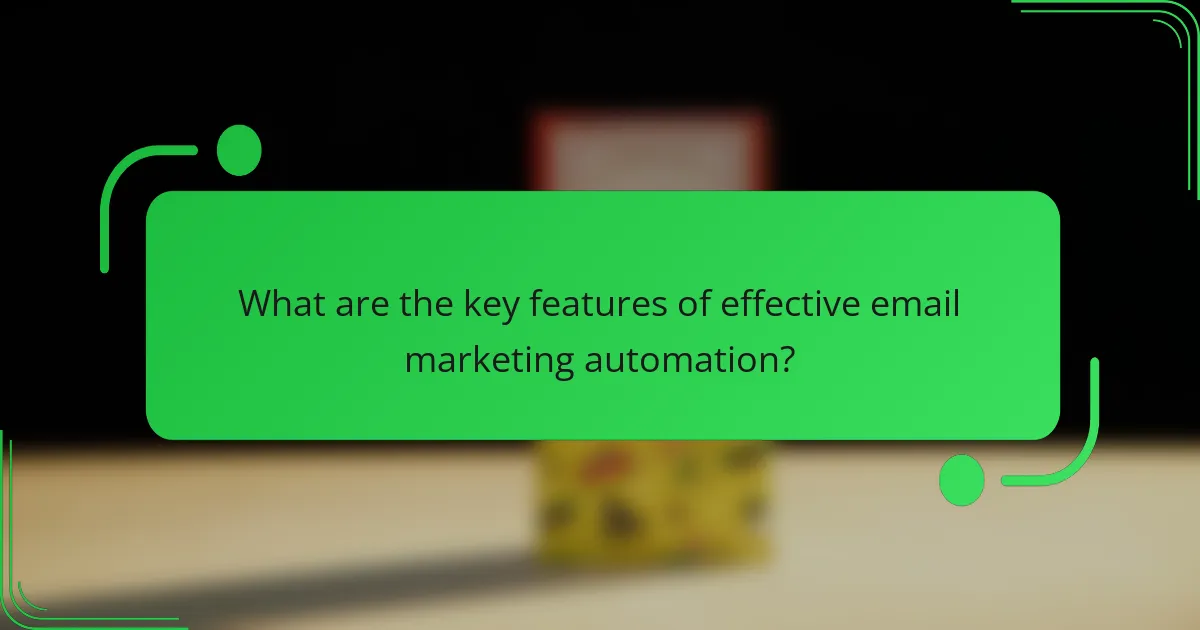
What are the key features of effective email marketing automation?
Effective email marketing automation includes features that enhance efficiency, ensure consistency, and improve lead generation. Key components such as automated workflows, segmentation, and analytics tools are essential for maximizing the impact of email campaigns.
Automated workflows
Automated workflows streamline the process of sending emails based on specific triggers, such as user actions or time intervals. For example, a welcome email can be automatically sent when a new subscriber joins your list, ensuring timely communication without manual effort.
Consider setting up workflows for various customer journeys, including onboarding, re-engagement, and post-purchase follow-ups. This not only saves time but also helps maintain consistent messaging across all stages of the customer relationship.
Segmentation and targeting
Segmentation and targeting allow marketers to tailor their messages to specific audience groups based on demographics, behavior, or preferences. By dividing your email list into segments, you can send more relevant content, which typically results in higher engagement rates.
For instance, you might segment your list by purchase history, sending promotions to customers who haven’t bought in a while while offering exclusive deals to loyal customers. This targeted approach can significantly enhance the effectiveness of your campaigns.
Analytics and reporting tools
Analytics and reporting tools provide insights into the performance of your email campaigns, helping you understand what works and what doesn’t. Key metrics to monitor include open rates, click-through rates, and conversion rates, which can inform future strategies.
Utilize these tools to conduct A/B testing on subject lines or content to see which variations perform better. Regularly reviewing these analytics will help you refine your approach and improve overall campaign effectiveness over time.
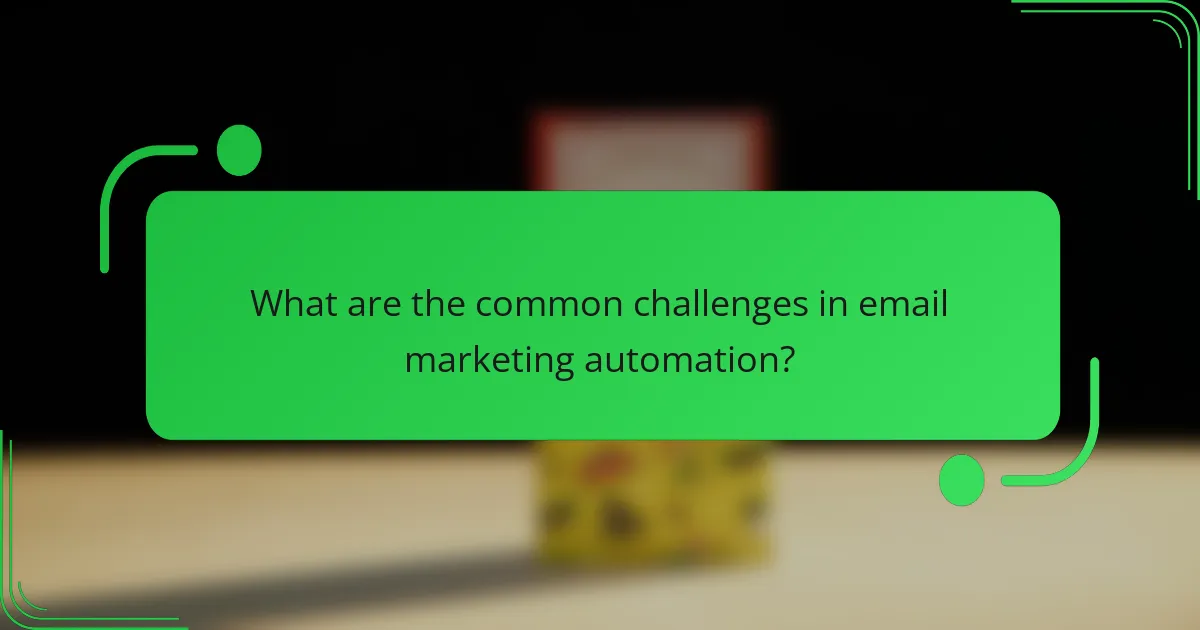
What are the common challenges in email marketing automation?
Email marketing automation can streamline campaigns, but it also presents challenges that can hinder effectiveness. Common issues include managing subscriber lists and avoiding spam filters, both of which are crucial for maintaining engagement and ensuring deliverability.
Managing subscriber lists
Effective management of subscriber lists is essential for successful email marketing automation. This involves regularly updating contact information, segmenting audiences based on behavior or demographics, and ensuring compliance with regulations like GDPR or CAN-SPAM.
To maintain a healthy subscriber list, consider implementing a double opt-in process, which confirms that subscribers genuinely want to receive your emails. Regularly cleaning your list by removing inactive subscribers can also improve engagement rates and reduce costs associated with sending emails to non-responsive contacts.
Avoiding spam filters
Avoiding spam filters is critical for ensuring that your emails reach the intended inboxes. Factors that can trigger spam filters include using certain trigger words, excessive punctuation, and poor sender reputation. Understanding these elements can help you craft emails that are more likely to be delivered.
To enhance deliverability, focus on building a strong sender reputation by sending relevant content, maintaining low bounce rates, and encouraging engagement. Regularly monitoring your email metrics can help identify potential issues before they affect your campaigns. Additionally, using authentication protocols like SPF and DKIM can further improve your chances of bypassing spam filters.
